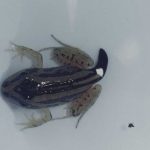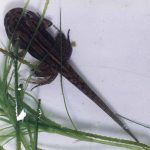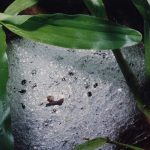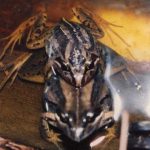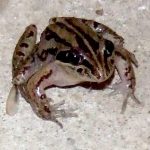STRIPED MARSH FROG
The Striped Marsh Frog is a medium-sized frog, typically ranging from 4.5 to 7.5 centimetres in length. Its most distinctive feature is the series of dark brown or black stripes running vertically along its back, contrasting against a lighter brown or olive-green background. The underbelly is usually pale, often white or cream, giving it a striking appearance. Its skin is smooth, and it has a noticeable tympanum, or ear drum, located behind the eye.
This adaptable frog is commonly found along the eastern coast of Australia, from northern Queensland down to Tasmania. It thrives in a variety of habitats, including swamps, marshes, ponds, and even urban gardens. The Striped Marsh Frog is quite resilient, able to live in both freshwater and slightly brackish environments. It is often one of the first frogs to colonise newly created water bodies, such as garden ponds. Despite its adaptability, the Striped Marsh Frog is sensitive to pollutants and changes in water quality, making it an important indicator species for environmental health.
The Striped Marsh Frog is an opportunistic feeder. It primarily consumes insects and other small invertebrates, such as beetles, spiders, and worms. It uses its long, sticky tongue to catch prey, which it swallows whole.
Breeding season for the Striped Marsh Frog typically occurs from late winter to early spring, although it can vary depending on the climate. Males call to attract females with a distinctive “tok” sound, similar to a wooden block being struck. They often call from concealed positions in dense vegetation or under debris. Females lay their eggs in clusters, which float on the surface of the water. The eggs hatch into tadpoles, which undergo metamorphosis into adult frogs over several weeks.
In the wild, Striped Marsh Frogs can live for several years, typically around 5 to 7 years, although some individuals may live longer under favourable conditions.
The Striped Marsh Frog is currently listed as “Least Concern” on the IUCN Red List. It is a common and widespread species, showing a remarkable ability to adapt to human-altered environments. However, like many amphibians, it faces threats from habitat destruction, pollution, and climate change.
The call of the Striped Marsh Frog is quite distinctive. It produces a repetitive “tok” sound, which is often heard during the breeding season. This call is not only a means of attracting mates but also serves to establish territory among males.

